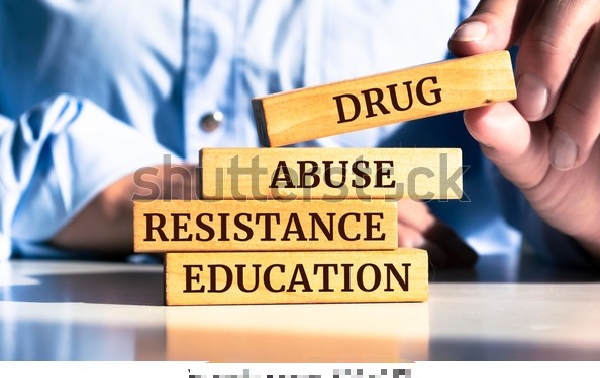
Top Benefits of Drug Abuse Resistance Education – Why It Still Matters in 2025
Introduction to Drug Abuse Resistance Education
Drug abuse resistance education, often abbreviated as D.A.R.E., is a globally recognized prevention program. Designed for school-aged children, it empowers young minds to resist peer pressure and make safe, healthy choices. Since its launch in the 1980s, D.A.R.E. has evolved into a cornerstone of drug prevention efforts in schools.
Despite the ever-changing landscape of substance abuse, the need for education remains critical. This program plays a key role in guiding youth through social challenges and the dangers of drug use.
The History and Evolution of D.A.R.E.
Initially developed by the Los Angeles Police Department and the L.A. Unified School District, D.A.R.E. was created to combat rising drug use among students. It quickly expanded across the U.S. and then worldwide. Over the years, the curriculum has been updated to address current issues, such as vaping, opioid addiction, and mental health.
Why Drug Abuse Resistance Education Still Matters
While some critics have questioned its past effectiveness, the revised D.A.R.E. curriculum is evidence-based and aligned with modern prevention science. It goes beyond just saying “no” to drugs. It teaches critical thinking, problem-solving, and effective communication.
Furthermore, it fosters trust between students and law enforcement officers, promoting community safety and collaboration.
How D.A.R.E. Empowers Youth
One of the program’s main strengths lies in its interactive approach. Lessons are led by trained officers who use real-life scenarios to help students think through difficult situations. With a focus on self-esteem and decision-making, participants learn how to stand firm against peer pressure.
Additionally, students gain tools to evaluate risks and make informed choices — both now and in the future.
Key Components of the D.A.R.E. Curriculum
The curriculum targets elementary, middle, and high school students. Core topics include:
- Substance abuse prevention
- Violence and bullying awareness
- Mental health education
- Effective communication and coping strategies
This layered approach ensures age-appropriate instruction throughout a student’s academic journey.
Impact on Students and Communities
According to recent studies, students who participate in drug abuse resistance education are more likely to avoid risky behaviors. Many also report feeling more confident in handling peer pressure and stress. As a result, communities experience reduced youth crime rates and better relationships between schools and law enforcement.
Parental Involvement in Prevention
Parents play a vital role in supporting D.A.R.E. lessons at home. Open discussions about drugs, media influences, and peer interactions can reinforce what children learn in the classroom. When families and schools work together, the message becomes stronger and more meaningful.
The Role of Law Enforcement Officers
Trained D.A.R.E. officers act not only as educators but also as mentors. Their presence builds positive perceptions of police and strengthens school safety. These trusted adults become a resource for students who may be facing difficult choices.
Challenges and Criticisms
Like many programs, D.A.R.E. has faced criticism in the past, especially regarding its long-term effectiveness. However, the modern version has addressed those concerns by adopting science-based strategies. As a result, it continues to evolve and remain relevant in tackling new-age drug threats.
Global Reach and Expansion
What started as a U.S.-based initiative has now expanded to over 50 countries. Each region customizes the curriculum to suit its cultural and societal needs. Yet, the universal message remains unchanged: say no to drugs and yes to a better future.
Incorporating Technology and Media Literacy
Today’s youth are constantly connected to digital media. The updated D.A.R.E. program includes lessons on media influence, cyberbullying, and the impact of online trends on substance use. By promoting media literacy, it helps students navigate the digital world responsibly.
Success Stories and Testimonials
Thousands of success stories demonstrate the lasting impact of drug abuse resistance education. Former participants often credit the program with helping them avoid addiction and make better life choices. Some even return as D.A.R.E. officers or volunteers to give back.
Looking Ahead: The Future of D.A.R.E.
As society continues to face new drug trends, D.A.R.E. must adapt. Plans include more mental health support, virtual classroom models, and stronger family engagement. These enhancements will ensure the program remains impactful for generations to come.
FAQs about Drug Abuse Resistance Education
1. What age group is D.A.R.E. designed for?
D.A.R.E. targets students in elementary through high school, with age-appropriate lessons for each group.
2. Is D.A.R.E. effective?
Modern evaluations show that the revamped D.A.R.E. curriculum improves decision-making and reduces risk behaviors among youth.
3. How are D.A.R.E. officers trained?
Officers undergo specialized training that equips them with the tools to teach, mentor, and support students.
4. Can parents get involved in the program?
Yes, D.A.R.E. encourages parental participation to reinforce lessons and promote healthy communication at home.
5. Does D.A.R.E. address mental health?
Absolutely. The curriculum includes modules on stress management, self-awareness, and emotional well-being.
6. Is D.A.R.E. offered internationally?
Yes, the program has been adopted in over 50 countries with localized adaptations for greater impact.
Conclusion
Drug abuse resistance education remains a valuable tool in the fight against substance abuse. With its interactive lessons, positive role models, and updated strategies, D.A.R.E. continues to empower students and build safer communities. Its long-term benefits make it more relevant today than ever before.